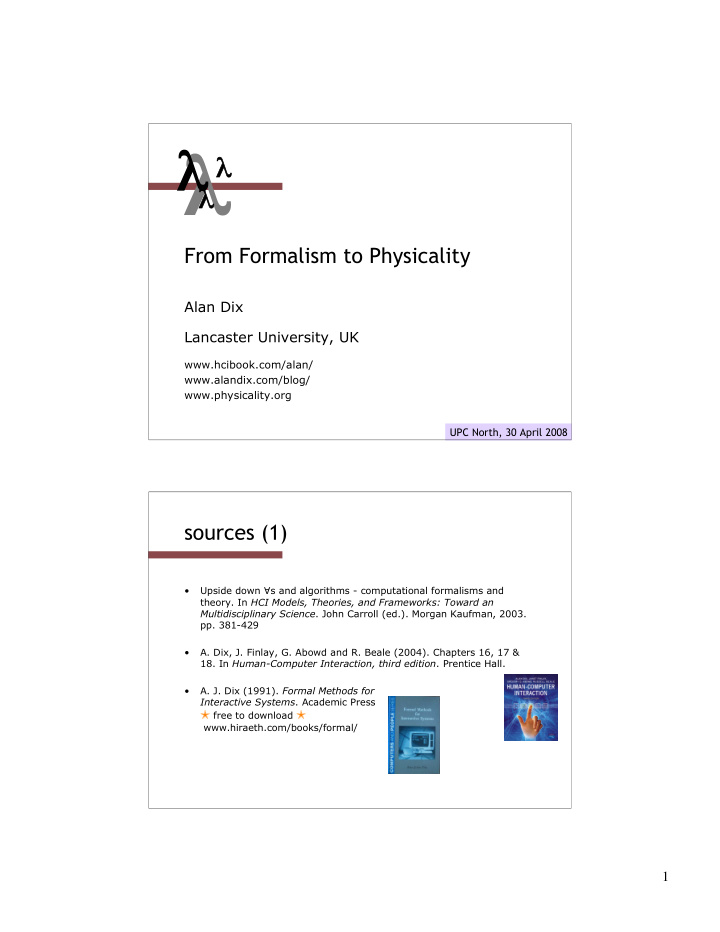



� � � � From Formalism to Physicality Alan Dix Lancaster University, UK www.hcibook.com/alan/ www.alandix.com/blog/ www.physicality.org UPC North, 30 April 2008 sources (1) • Upside down � s and algorithms - computational formalisms and theory. In HCI Models, Theories, and Frameworks: Toward an Multidisciplinary Science . John Carroll (ed.). Morgan Kaufman, 2003. pp. 381-429 • A. Dix, J. Finlay, G. Abowd and R. Beale (2004). Chapters 16, 17 & 18. In Human-Computer Interaction, third edition . Prentice Hall. • A. J. Dix (1991). Formal Methods for Interactive Systems . Academic Press � free to download � www.hiraeth.com/books/formal/ 1
sources (2) • A. Dix, J. Sheridan, S. Reeves, S. Benford and C. O'Malley (2005). Formalising Performative Interaction. Proceedings of DSVIS'2005 . (Newcastle, UK, 13-15 July 2005). Springer, LNCS 3941, pub. 2006. pp 15-25. • A. Dix, M. Ghazali and D. Ramduny-Ellis (2007). Modelling Devices for Natural Interaction. In Proceedings of FMIS 2007 2nd International Workshop on Formal Methods for Interactive Systems , P. Curzon and A. Cerone (eds.), ENTCS, Vol 208C, pp 23-40, Elsevier. for i green letters tumble against black glass and dim pizza filled rooms tremble with heavy intonations, fingers drum whilst a single screen reflects a bespectacled face on plastic rimmed spectacles, seeing clearly four eyes doubled and redoubled by interactions of photons, words form from the void within for i = it is done language is the ultimate formalisation tying patterns of electrical and chemical activation, spaghetti wrapped neurons, discretised to token sounds, virtuosity to vocabulary; in writing digitised as fingers scratch ink upon parchment or softly caress smooth worn key tops before I continue let us reflect, for i can only tell my story, but the words are our own, for eye to eye and voice to voice the tokens were formed, even though sheet to sheet or screen to screen we use them now and we have found ways to bare our soul and transport our listeners through simple words, and to, in turn, reflect and talk about the talking, formalising the understandings we have about words in words the hard edged symbols cut upon stone, dark text stamped from lead, and pixelated poetry touch our very heart is it surprising that silicon and liquid crystal should be no less richly understood 2
outline • setting the scene – what is formal? – first examples – types of formalism – placemat maths • models of systems – dialogue notations – modelling state – generic models of interaction • why do it? – it works! - a formal methods success story – formal futures - performance and physicality 3
Recommend
More recommend